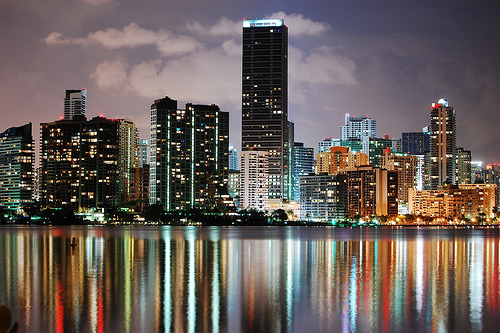I’m obsessed with walkability as a concept. I think I’m a millennial, and walkability is seemingly what my crew wants out of cities. Walkable urban cores might be the biggest real estate development since WW2. Hell, millennials moving to cities and having kids might make soccer popular in the United States. (Cats and dogs, living together.)
Well, my wife is from Miami and one of my best friends is from Phoenix. (Another close friend and his wife now live there.) I’ve been to both cities a bunch of times. I wouldn’t necessarily call either city “walkable.” I’m from New York City, which is probably the most walkable city in America in some respects, and I went to college in DC, which is right up there too. (I also have family in Boston!)
Here’s the thing, though: as cities grow and evolve — and as the stat about 80 percent of the world living in a city by 2050 creeps closer to reality — certain “non-walkable” cities are becoming walkable. Namely, Miami and Phoenix. Here’s what is happening.
Start here. Here’s the current “Most Walkable Cities” list in America, based on this report from Smart Growth America:
Predictable cities near the top and bottom, yes.
Now look at this map, which is a future ranking:
Most of the stuff at the top is the same, but notice that Phoenix and Miami rose up — Miami went from the “bad zone” (the Level 3 tier) to the “good zone” (the Level 1 tier) and Phoenix went from near the bottom to near the middle.
So how’s that going to happen?
Phoenix: PHO was once the poster child for sprawl, but no longer. As you’d expect, a lot of it started with a light-rail system that connected the farther-afield communities. The light rail was the most expensive element, and a more walkable zoning code followed. The team behind this is saying some high-end stuff — “The city that survives in the 21st century is a city that relies on simpler methods of mobility and transportation than just cars,” for example — but there are still concerns. First of all, Phoenix is regularly a goddamn oven during the summer, so it’s unclear whether people will want to walk. That said, there do appear to be jobs there and people will move there for those jobs, so having a walkability aspect is a positive — even if it only applies 7-8 months of the year. People knock the light rail approach — Houston’s been having a few issues with it — but it seemingly can work.
Miami: The future rankings are all about planned investment in public transportation and commercial clusters, both of which Miami is committing to. Apparently, in the real estate world, Miami is a “man bites dog” story. Their walkable urban spaces — like Brickell, or even downtown Fort Lauderdale (which, yes, is not Miami) — are absorbing real estate 100 times faster than the region as a whole. (In short, people would rather put offices and businesses in those areas than in the areas you need to drive to, i.e. office parks.) That said, public transit in Miami is flat-out miserable (quote from the link above), and it’s one of the only cities I’ve ever been to repeatedly where people call their light rail “a people mover” and nothing else. South Florida as a general concept was built after the invention of the automobile, so it lacks the already-existent walkable cores of some cities further up north on I-95. Still, it could evolve to that place — and numerous areas of Miami including Coral Gables, Aventura, Coconut Grove, etc. already have some walkability.
What do you think? This could become especially relevant because both Miami and Phoenix, as areas, are big retirement destinations. Boomers are about to retire en masse. Having walkability is generally good for retirement. (I just had a conversation with my parents over these holidays about their generalized retirement plans, which are probably going to include NYC, primarily because it’s walkable.) If Miami and Phoenix do become walkable cities in the broadest sense, will that only see their populations increase more?



We’re having success with this up here in pittsburgh